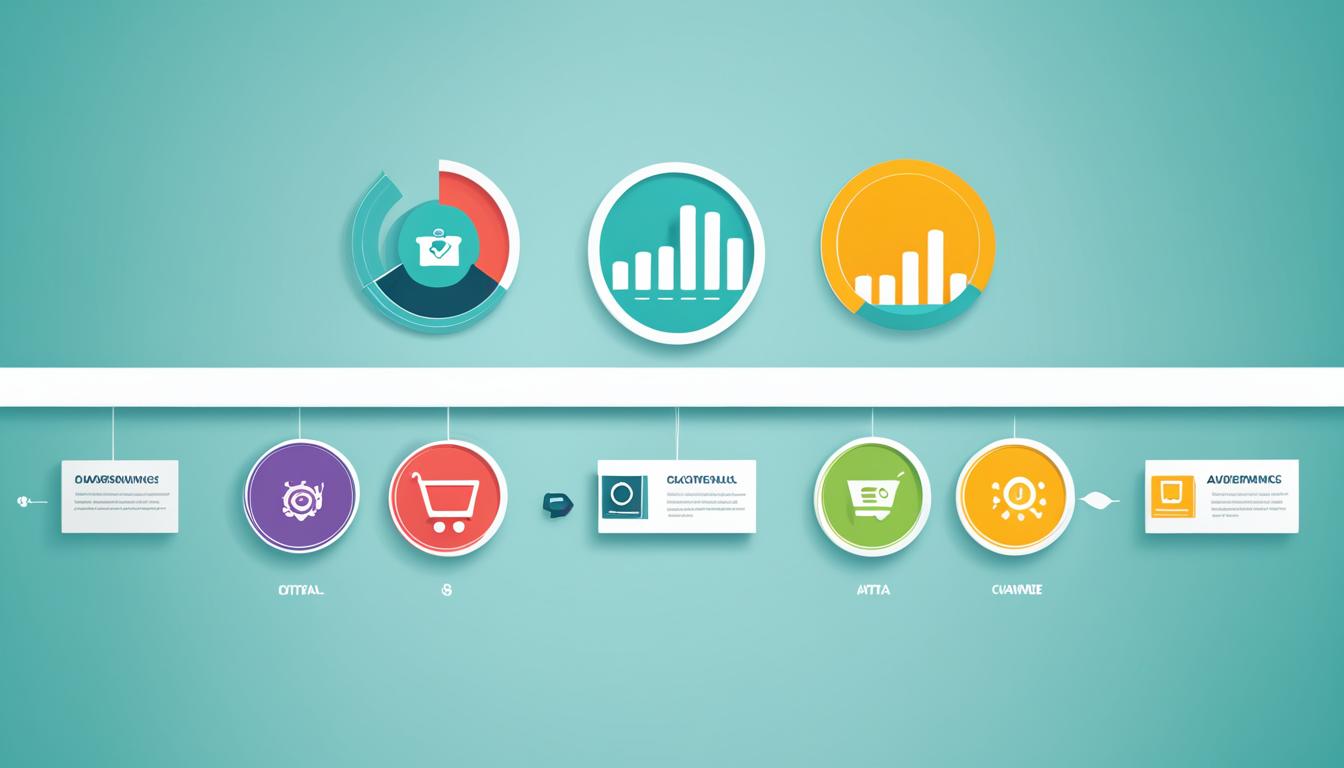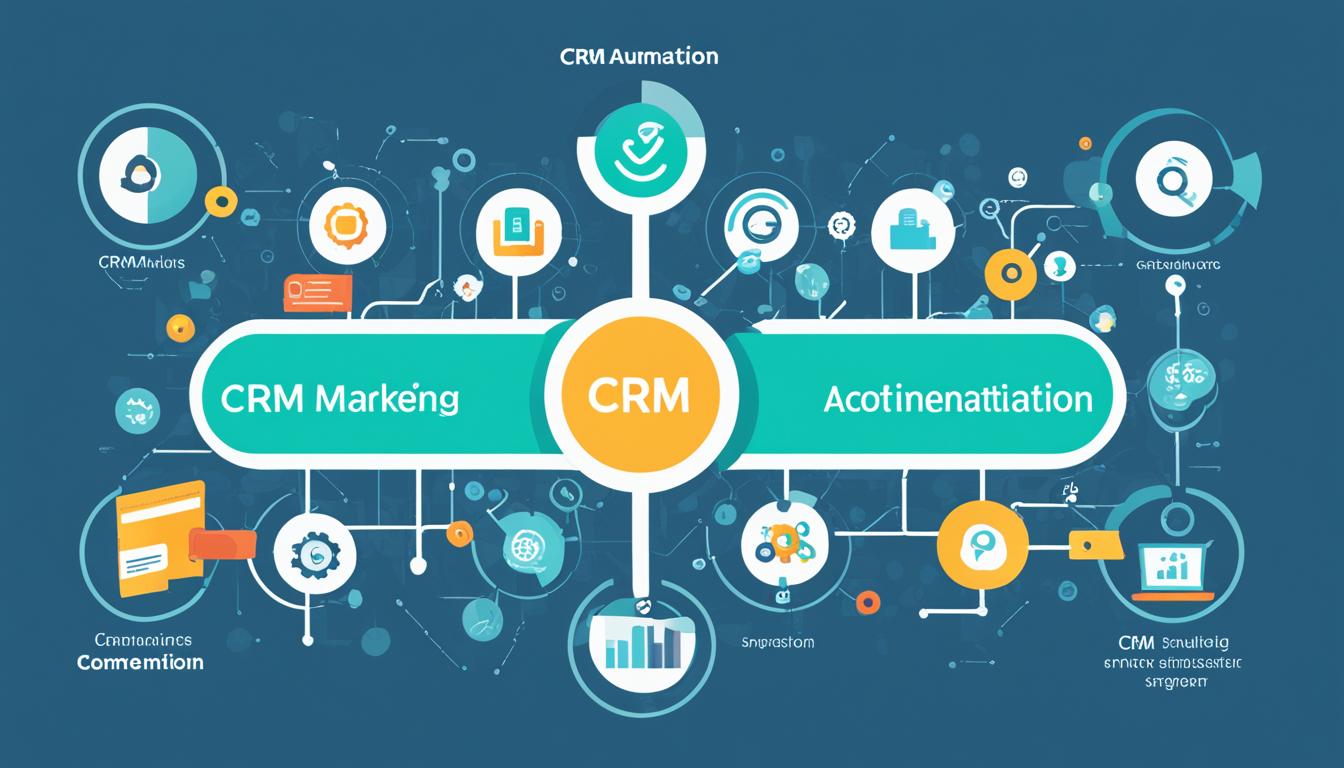E-farming marketing uses digital tech to make farming better. It focuses on optimizing crop growth, using resources well, and making smart choices. We’ll look at how e-farming marketing works and show examples of its success in changing farming for the better.
Key Takeaways:
- E-farming marketing leverages digital tools to optimize farming practices.
- It can improve crop monitoring, resource allocation, and decision-making.
- Real-world examples demonstrate the success of e-farming marketing.
- Effective branding and clear communication are vital in e-farming marketing.
- E-farming marketing contributes to a more sustainable and efficient food system.
Understanding Your Brand in E-farming Marketing
Your brand is key in e-farming marketing. It helps you stand out and connect with your audience. It includes your name, logo, values, mission, and how you talk to customers. Knowing your brand lets you send a clear message to your customers about what makes you special.
It’s important to know your audience, what you offer, and your competitors. This helps make your brand strong online and offline. By doing this, you can place your brand well in the fast-paced world of e-farming.
Defining Your Brand Identity
Think about what makes your farm unique when creating your brand identity. What values and principles are important to you? Identify what makes you different from others and what your audience likes. Your name and logo should show off your unique identity. Your mission and values should share your farming’s goals and beliefs.
Your way of talking should fit your brand’s personality. It could be informative, friendly, or professional. Whichever it is, it should match what your audience likes. Keep this consistent in all your marketing, online and offline. This helps people recognize and remember your brand.
Researching Your Target Audience and Competition
Understanding your audience is a must in e-farming. You should know their needs, likes, and issues. This lets you make marketing that speaks to them.
Also, watch your competitors. See what they do well and not so well. Use this to make your marketing better. Keep up with industry trends and what customers want. This way, you can keep your brand relevant and strong.
Remember, your brand shows who you are as a farm. By knowing your brand, learning about your audience and competitors, and keeping your brand consistent, you can build a strong online presence. This helps you connect better with your customers.
Working on Your E-farming Marketing Strategy
It’s key to have a solid e-farming marketing strategy to promote your farming business. Start by making sure your products, prices, and locations are easy to find and the same online and offline. This gives your customers a consistent experience, no matter how they interact with your business.
To plan your e-farming marketing strategy, consider these important questions:
Defining Your Goals
What do you want to achieve with your e-farming marketing? It might be more sales, wider brand awareness, or becoming a leader in your field. Setting clear goals lets you make a plan that you can measure.
Identifying Your Ideal Customer
Who are you trying to reach? Knowing who your perfect customer is helps you craft messages and promotions that speak to them. Use market research and look at your current customers to figure out who they are.
Crafting Your Message
What makes your farming business unique? Create a strong message that shows the benefits of what you offer and how you’re different from the competition. Make sure your message is short, powerful, and matches your brand.
Setting a Budget
How much money can you spend on your e-farming marketing? Making a budget helps you understand what you can do. Think about costs for online and offline ads, creating content, and any partnerships you might want.
Determining the Most Appropriate Venues for Your Content
Where will you share your marketing content? Pick the online spaces, social media, and events that your target audience likes. Be active where your potential customers are most likely to see your content.
Remember to track how well your marketing is working. Look at things like website visits, social media interactions, and how many people are interested in what you offer. Use this information to improve your strategy and decide what to do next.
With well-defined goals, clear messages, and good tracking, you can reach and connect with your audience, both online and offline.
| Online Marketing Channels | Offline Marketing Channels |
|---|---|
| Search Engine Optimization (SEO) | Local Farmers’ Markets |
| Social Media Advertising | Agricultural Trade Shows |
| Email Marketing | Radio and TV Ads |
| Content Marketing | Print Advertising |
| Online Marketplaces | Direct Mail Marketing |
Key Criteria for Effective E-farming Marketing
In e-farming marketing, you must consider several things to be successful. It’s time to use the strength of digital agriculture in your strategy. This approach will help your farm work better and boost your business. Let’s look at what makes e-farming marketing work well:
1. Clear and Resonant Messaging
For your farm’s marketing to hit the mark, you need to be clear. Your message should show what’s special about your farm. Tell people how they’ll benefit from your products or services. Use stories and images that grab their attention. This way, people will remember your farm and come back.
2. Simplify for Accessibility
The K.I.S.S principle (Keep It Simple, Silly) is crucial for e-farming. Your farm’s products and services should be easy to find online. Use websites and apps that are easy to navigate. Your message should be clear and straightforward. This makes it easier for more people to connect with your farm.
3. Exploring Various Promotion Strategies
Marketing your farm means trying out different ways to get noticed. Be active on social media to reach more people. Use ads, partner with others, join fairs, and give discounts. These steps will help you find new customers and spread the word about your farm.
4. Monitor and Evolve
Marketing for your farm needs constant attention. Always check how well your approaches are working. Look at your website visits, social media activity, and sales. Based on the data, see what you can do better. Keep up with new trends and tools in digital farming. This will keep you ahead of your competitors.
| Key Criteria | Explanation |
|---|---|
| Clear and Resonant Messaging | Define and communicate your message in a way that resonates with your target audience. Use authentic content that engages the senses. |
| Simplify for Accessibility | Keep your marketing materials simple and user-friendly to ensure accessibility and easy understanding. |
| Exploring Various Promotion Strategies | Adopt dynamic online presence, targeted advertisements, partnerships, exhibitions, and occasional discounts to expand your reach and attract new customers. |
| Monitor and Evolve | Regularly analyze key metrics and adapt your strategies to stay relevant and optimize your marketing approach. |
By following these essential steps in your e-farming marketing, you can push your farm forward. Embrace digital plow and precision agriculture to fit into the digital age. This will make your marketing stronger and help your farm grow.
The Essence of E-Farming: Definition and Scope
E-farming combines digital tools with traditional farming. It uses precision agriculture, farm management software, and data analytics. These improve farming operations. The aim is to boost efficiency, productivity, and sustainability. E-farming lets farmers base decisions on up-to-date soil, weather, and crop health information. This change in agriculture helps farmers increase yields, lower costs, and manage farms better.
Data-Driven Agriculture
Data-driven farming is key to e-farming. It lets farmers gather and analyze lots of data for better choices. With technology, they understand soil health and crop growth better.
This leads to smarter use of resources and more productivity.
Digital Tools in Agriculture
Digital tools have changed farming. Technologies like smart sensors and drones help monitor and automate farming. They improve resource management and farm performance.
Digital Advancements in Farming
Digital progress offers new farming possibilities. Tools like automated machines and remote systems give instant insights. They increase efficiency and help farmers make better choices. These tools help tackle various farming challenges and advance the field.
| Benefits of E-Farming | Challenges in E-Farming |
|---|---|
|
|
Harnessing the Technological Harvest: Digital Tools and Technologies in E-Farming
E-farming uses many digital tools to change how we farm. These tools help farmers work more efficiently, reduce hard labor, and make smart decisions. This leads to success in growing crops and raising animals.
Smart Sensors for Precise Monitoring
Smart sensors have changed the farming game. They check soil moisture, temperature, and nutrients. Farmers get useful data for watering and feeding their crops.
By using smart sensors, farmers use less water and fertilizer. This helps crops grow better.
Unleashing the Potential of Drones
Drones with cameras are key in today’s farming. They take pictures from above. This helps check crop health and control pests.
Spotting diseases or pests early lets farmers protect their crops. This way, they can produce more food.
Efficient Farm Management with Software Solutions
Farm management software acts like a control center. It keeps track of records, supplies, and money digitally. This gets rid of paper tasks.
This tool helps farmers use their resources wisely. They can make good choices based on solid info.
Embracing the Internet of Things (IoT)
The Internet of Things (IoT) has changed farming big time. It lets farmers check and control farm activities from afar. IoT gadgets, like auto watering systems and animal monitors, boost efficiency and cut down on manual tasks.
The Power of Digital Tools in E-Farming
With these digital tools, farmers can get insights, use less, and make smart choices. Mixing smart sensors, drones, software, and IoT devices has made farming modern, more effective, and green.
Getting Started with E-Farming: Assessing Your Farming Needs
Before you start with e-farming, it’s key to understand what you need. Find out what problems you have and how e-farming can help, like with pests or watering your crops. This way, you can pick digital farming tools that solve these issues.
Think about the size of your farm, where it is, and what you grow. This will help you choose the right digital tools. Having the right tools is very important for making your farm better.
Assessing Pain Points and Efficiency Gaps
First, figure out what’s not working well on your farm. Do you have trouble controlling pests or watering your crops right? Do you have issues with keeping your crops healthy or getting a lot from them? Finding these problems lets you pick digital answers that fix them, making your farm run smoother.
Choosing the Right Digital Tools and Technologies
After you know your issues, look at the digital fixes out there. Find tech that makes farming more accurate, like sensors that check soil or systems that water your crops automatically. Make sure these tools work well with what you already have and that they’re good for real farming.
| Digital Solutions | Description |
|---|---|
| Smart Sensors | Monitor soil moisture, temperature, and nutrient levels in real-time, enabling precise irrigation and nutrient management. |
| Automated Irrigation Systems | Utilize data-driven insights for efficient water usage, reducing waste and ensuring optimal crop growth. |
| Farm Management Software | Streamline record-keeping, inventory management, and financial tracking, providing a centralized platform for efficient farm operations. |
Check what you need and look at the tech available. Pick digital tools that match your farm’s needs. This will make your farming more precise.
Building a Strong Digital Infrastructure
For successful e-farming, a strong digital setup is key. This means getting the right hardware and software. You might need devices to control your digital tools or software for your farm.
Make sure everything works well together. Choosing secure and reliable digital solutions keeps your farm’s data safe. It also keeps things running smoothly.
Look at your farm’s needs and what digital options are there. Also, build a strong digital base. The best mix of digital tools will help your farm do better, produce more, and be more eco-friendly in today’s digital world.
Building Your Digital Infrastructure in E-Farming
Building a strong digital setup is key for e-farming success. It involves getting the right tech and tools to support your online farming activities. Think about what your farm needs, like digital gear, farm management programs, and secure tech parts, and pick the best fit.
A solid digital setup is the core of your e-farming work, offering a safe and solid base. By putting money into this, you can use digital tools to make farming better.
The Role of Digital Farming Hardware
Digital farming hardware means all the tech tools used in e-farming. These tools help farmers collect data, watch over crops, manage livestock, and automate tasks for smoother operations. Examples include:
- Sensors and controllers: These gadgets measure things like soil wetness, heat, air wetness, and nutrient levels. They give updates to help manage water, feed, and fight pests.
- Computers and servers: Key for keeping and analyzing loads of farm data. They help farmers look into info and make smart choices for better farm management.
- Mobile devices: Phones and tablets let farmers use farm management apps and other tools on the move. They offer updates for faster decisions, boosting efficiency.
The Importance of Farm Management Software
Farm management software is a big deal in e-farming as it brings together and simplifies farming tasks and data. It turns processes digital, cuts down on work, and ups productivity. Main perks and features include:
- Inventory management: Helps track seeds, fertilizers, and other stuff, using them well and reducing waste.
- Record-keeping: Makes recording farm data like crop yields and cost records easy and precise. This info helps spot trends and make wise choices.
- Financial tracking: Aids in watching over expenses and profits, making budgeting and financial reports easier.
- Task automation: Lets software handle repeat tasks, like watering or feeding, cutting down manual work and improving operations.
Ensuring a Secure Digital Infrastructure
Having a safe digital setup in e-farming is crucial to keep data protected and operations running smoothly. Key points for a secure digital setup include:
- Network security: Use strong firewalls, encryption, and secure access to protect your farm network from hackers and threats.
- Data privacy: Follow rules to keep customer and employee info safe. Encrypt important data and keep all software up to date to avoid security risks.
- Backup and recovery: Backup data regularly to avoid losing it. Have plans ready for emergencies like equipment breaks or natural disasters.
- Reliability and scalability: Choose tech that fits your farm’s needs now and can grow with you. Keep your digital setup updated for the best performance.
By getting the right digital farming tech, using farm management software, and keeping your digital setup secure, you can make your farm succeed in e-farming. These key parts help you use data and tech to improve your farm and grow sustainably in the agricultural world.
Exploring Opportunities and Challenges in E-Farming
E-farming brings many opportunities in e-farming. These include more food production, less waste, and better lives for farmers. With technology, farmers can use resources better and farm in sustainable ways. This leads to higher yields and more profits. E-farming helps farmers make smart choices, use precision agriculture, and use resources well. This makes farming better for the environment.
But, e-farming faces some challenges in digital agriculture. The cost of new technology, limited digital literacy among farmers, and worries about data privacy are some hurdles. Also, the lack of technology in rural areas makes it hard for some farmers to start e-farming.
The promise of more sustainable agriculture pushes the exploration of e-farming forward. E-farming can help meet the urgent need for efficient food production while caring for the environment. Digital tools let farmers use resources wisely, reduce harm to the environment, and ensure we have enough food.
Farmers have a big role in creating a thriving agricultural future through e-farming. It gives them ways to improve farming, make smart choices, and grow more crops sustainably. With continued research, learning, and investment, the farming industry can reach e-farming’s full potential. This could lead to a stronger, greener future in farming.
The Future of E-Farming and its Potential
E-farming could change agriculture massively. It uses technology and data for better farming. This means more sustainable and efficient work for farmers.
With digital tools, farmers get useful insights. They can manage their work better and make smart choices. E-farming could change every step of farming, making things better from start to finish.
As tech in farming gets better, e-farming could lead to more produce, less harm to the environment, and happier farmers.
The Benefits of Sustainable Agriculture
Sustainable agriculture is key to e-farming. It looks to protect ecosystems, communities, and farming practices for the long term. Farmers use safe farming methods to cause less harm and save water.
They also aim to save biodiversity. This helps keep ecosystems healthy. It also means better quality food for people, helping with food security.
Efficient Farming Practices for Increased Productivity
E-farming helps farmers do their work better. They use precision agriculture to meet their fields’ specific needs. This saves resources, cuts waste, and protects nature.
They also use modern tools like robots and IoT devices. These make work easier, cut down costs, and boost efficiency. By adopting these practices, farmers can grow more, spend less, and earn more.
Driving Digital Transformation in Agriculture
E-farming is bringing the digital revolution to farming. It uses AI, machine learning, and data analysis. This gives farmers the information they need for better decision-making.
With these technologies, farmers can keep an eye on crop health and manage risks better. They can predict the weather and manage water use more effectively. This revolution gives farmers knowledge and helps them share good practices.
As we look to the future, e-farming can tackle big issues like climate change and food security. It supports sustainable farming and efficient practices. This could make farming more robust and wealthy. With e-farming, the future of agriculture seems bright and hopeful.
Real-World Examples of Successful E-Farming Marketing
E-farming marketing has changed the game for the agricultural industry. Farmers and businesses now use digital tech and data to reach their audience and grow their business. Let’s look at some examples that show how e-farming marketing can make a big difference.
Example 1: XYZ Farms
XYZ Farms, a top organic produce farm, uses e-farming marketing to share their eco-friendly practices with the world. They use digital tools to build a strong online presence, showing their commitment to quality and the environment. By using social media ads and working with organic food retailers, XYZ Farms reached more people and grew their business.
Example 2: ABC Agribusiness
ABC Agribusiness, a big name in agricultural supplies, used e-farming marketing to boost their brand and sales. They created a great online experience with a simple website, blogs, and social media. By being part of exhibitions and offering online discounts, ABC attracted and kept more customers. They showed their dedication to using digital tech in farming, making them a go-to partner in agriculture.
Example 3: MNO Farming Co.
MNO Farming Co., a family farm known for special crops, combined data-driven farming and e-marketing to do better and reach more people. They gathered data on their farm using new tech to make smart decisions and improve their farming. With honest and real stories shared online, MNO Farming Co. reached people who care about sustainable, local products.
These stories show the power of e-farming marketing in revolutionizing farming. By using new tech and data-driven practices, farmers and agribusinesses can improve their marketing, connect with people, and grow their business sustainably. The future of e-farming marketing is promising, with many chances for farmers to use tech to highlight sustainable and efficient farming.
| Success Story | Key Strategies | Results Achieved |
|---|---|---|
| XYZ Farms | Create dynamic online presence, targeted advertisements, and partnerships | Increased market share and customer engagement |
| ABC Agribusiness | User-friendly website, social media content, agribusiness exhibitions, and exclusive discounts | Enhanced brand visibility and increased sales |
| MNO Farming Co. | Data-driven farming practices, farm management software, and authentic storytelling | Optimized operations, expanded customer base, and improved sustainability |
Conclusion
E-farming marketing opens new doors for farmers and agribusinesses. It allows them to revolutionize how they reach their target audience. By using digital tools, optimizing their brand, and creating effective strategies, they unlock e-farming’s full potential. This change leads to better productivity and profits and helps create a more sustainable food system.
The e-farming world is changing fast. It’s key for farmers and agribusinesses to keep up, adapt, and grab new chances. They can use online promotion, e-commerce, and advertising to engage their audience online. Digital agriculture blends with traditional farming to make better decisions, practice precision agriculture, and work more efficiently.
Going forward, e-farming marketing is essential, not just a trend. Using digital tools and the benefits of digital farming, businesses can succeed in today’s market. They also help make agriculture more sustainable and prosperous. Now is the time to adopt e-farming marketing. It is crucial for their success in the digital agriculture era.





